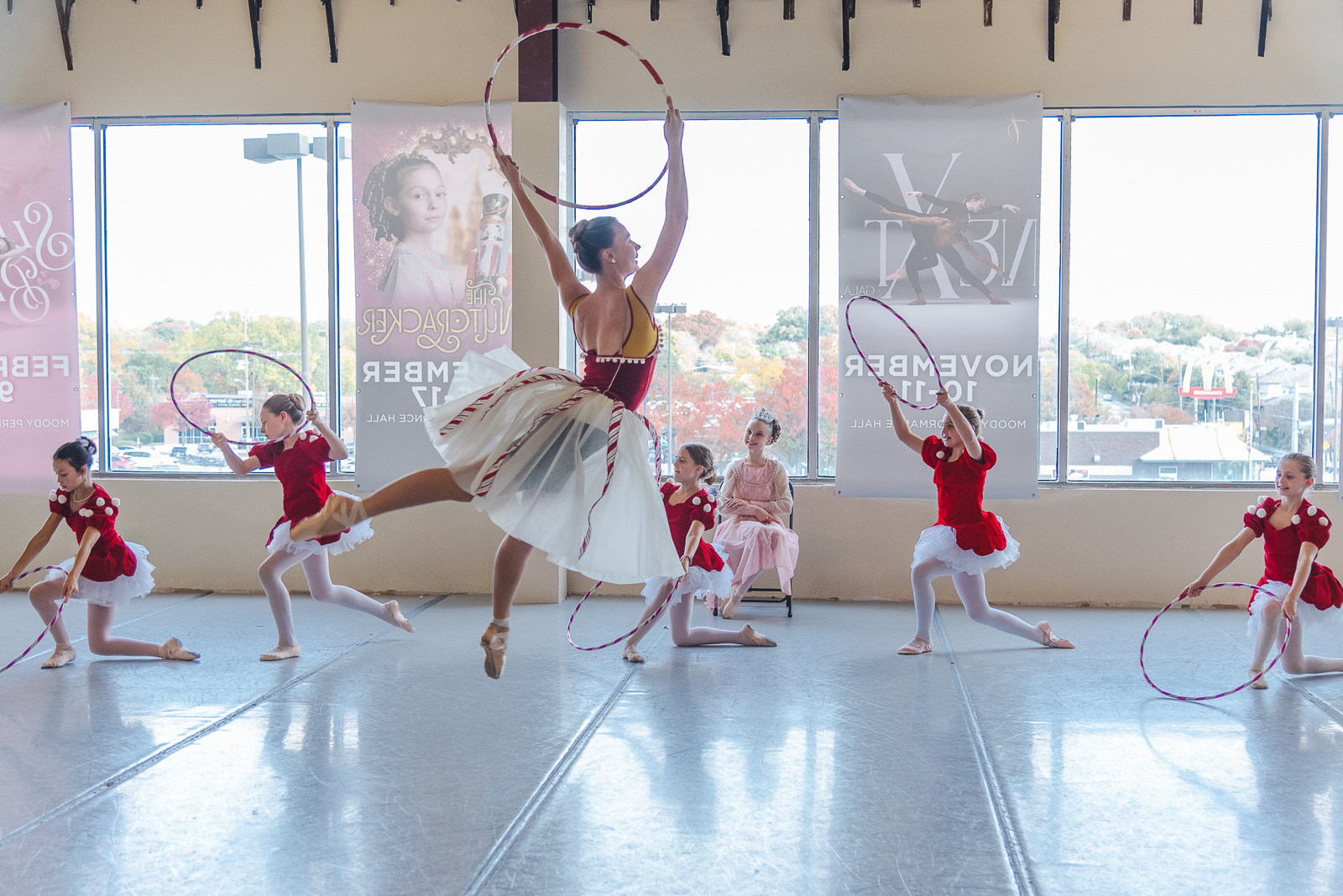It started started years ago when Nicolina Lawson, founder of Ballet North Texas, was traveling three times a week from Wichita Falls to Dallas in order to continue dancing professionally.
Before starting a career in ballet, Lawson watched her mother, Cindy Michaels, ballet master and resident choreographer of Ballet North Texas, who had been a professional ballerina for 26 years. In awe of her mother’s passion, she began dancing as a young ballerina in California and continued in ballet for years, performing in various cities, states and studios around the world.
Despite her worldwide background, Lawson had no choice but to move to Wichita Falls where her husband would be stationed. It wasn’t “too far” from Dallas and Lawson wanted to continue a career as a professional ballerina in a big city.
However, through her routine commutes to Dallas she found herself wanting more professional opportunities as a dancer and there weren’t many companies to choose from. If the opportunities weren’t going to present themselves, she knew she’d have to create those opportunities for both herself and other dancers.
Ballet North Texas is located at 10675 E NW Hwy Suite 2400 across the road from East Dallas Arts. Since its founding in 2017, the company has continued to grow, bringing in dancers from across the nation, live television appearances and performances in various theaters across the metroplex.
What started as a single woman looking to continue a career in ballet has flourished into a well-known dance company of 14 full-time dancers.
Colleen Reed, professional ballerina at BNT and Netflix star of season three of Love is Blind, says one of the most notable differences between Ballet North Texas and other studios was how diverse the dancers were and the progressive efforts the company made to include as many individuals in their show and audience as possible.
Reed says in her experience at BNT everyone gets a chance to showcase their talent. No dancer is limited on roles, or opportunities to be in the company based on physical appearances.
In previous showings of Ballet North Texas, like The Nutcracker, there have been dancers who were in wheelchairs, individuals both young and old, some people who’d been dancing since they took their first steps and some who had never danced before.
When you include more dancers who look different, dance differently, have disabilities or varying heights and body types, it makes a huge impact for the audience and the children who watch these performances, Reed says. It gives people the opportunity to identify with the dancers and say “I can do that too.”
Ballet is an art form, an expression of movement and an experience for all lovers of dance.
With a vision to increase inclusivity, Lawson says there’s no limit to who can be on stage.
“In the same sense that I was looking for opportunity, I also want to present opportunities for dancers, people that think they want to be dancers … I really do think that dance is for everyone,” Lawson says. “There’s always something that you can do and if you want to be on stage, then I want to be able to make that happen.”
One of the many additions Ballet North Texas is incorporating to enhance inclusivity in ballet is its sensory-friendly performance. Sometimes there are lights, sounds or costumes of a show that can trigger individuals with autism, PTSD or anxiety.
Further efforts have been made to prevent excessive stimulation, this includes reducing sound levels for loud aspects of the show, half-lit house lights to allow guests to use electronic devices and trained staff to assist guests. Additionally, people are encouraged to move around and talk if needed, adding to a relaxed atmosphere.
The sensory-friendly performance allows all individuals to attend the performance who may not otherwise be able to connect with the show.
But Lawson isn’t quite done enhancing her company to make the forefront of Dallas’ dance scene, there’s still a lot of work to be done, she says.
She looks forward to the day the company can do pre-and-post-show tours for people to get to know the dancers, feel the costumes, see where they’re going to be seated and experience the theater before performance day.
Regardless of the show you’re performing, the job as a dancer is to connect with the audience, Lawson says. Ballet is an art everyone should be able to experience and through sensory-friendly performances allows the opportunity for more individuals to enjoy ballet, she adds.






